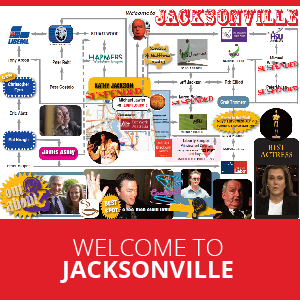Experts warn half of entry-level jobs may vanish. Australia risks ignoring an AI crisis that could strip workers of economic leverage. Jemma Nott reports.
MANY FORMER and current AI researchers or AI company heads have warned that the U.S. labour market could be facing significant disruption from AI.
Darios Amodei, the CEO of Anthropic, even went as far as to say that workers “could lose economic leverage.” He warned that workers could lose half of all entry-level white collar jobs and spike unemployment to 20 or 30% as well as the general loss of ability to shape the direction of the labour force. There has been a general attitude within economic analysts of the labour market which acknowledges legitimate concerns about AI but fundamentally lacks imagination about a world in which the warnings of people like Darios could indeed be reality.
Suspicion of this narrative peddled by the various pundits across the tech industry, both attached to a major tech company and not, is common among Australian analysts and political economists largely because these companies have a vested interest in drumming up panic to drive investment. However, what’s not being considered in great detail is that both those suspicious of outlandish claims made by tech giants and those who think we are 5 years away from a dystopian Artificial General Intelligence could be correct.
Undoubtedly, a bubble has been forming around Silicon Valley in the context of AI that has most of the characteristics of the Dot-Com bubble of the 90s. The top ten AI companies are even more overvalued than the top Dot-Com companies right before the Dot-Com bubble crash. Microsoft, for example backed out of a hub of data centres it was building, citing primarily lack of economic growth being produced by AI so far as a reason. Meanwhile, immense amounts of investment are being poured into data centres elsewhere with the expectation that immensely higher levels of compute will lead to something economically transformative. Most of the top ten tech companies in particular, have quite bullishly wheeled and dealed their way into the rooms of Saudi billionaires and the Trump Administration, and in the process reached the trillion-dollar “too big to fail” status.
What we can learn from the Dot-Com bubble crash though, is that you can have overvaluated companies poorly understand by the market (companies literally adding .com to their name during the Dot-Com bubble drove investment in the same way that start ups simply saying “agentic AI” has become the key to a couple of million) but also an extremely transformative technology in the making. After all, the Dot-Com Bubble burst was not a failed bet that websites would have incredible power to generate revenue; it was a failed bet on which websites would generate revenue and how venture capitalists of the time did not understand that website traffic was not the same thing as earnings, in the same way that pundits in Silicon Valley seem to not properly understand that productivity alone does not inherently lead to economic growth. In the West, especially, with predominantly services and financial industries, automation in the labour market would lead to the greatest loss in the main driver of economic growth – consumer spending.
However, that doesn’t mean that these overvaluated companies won’t radically transform our labour market anyway and in fact that could indeed be why these tech heads have taken the sharp turn towards cosying themselves up to the U.S. Government. In Australia, we have been keeping our heads in the sand while large-scale roll-out of AI begins to hit white collar industries in the U.S. White collar workers are being interviewed by large language models or replaced by GPT4 and now GPT5, which purports to be an even better agentic AI engineer with the promise to make software from end-to-end. Detractors say, well that will create new jobs in the form of prompt engineering specialists, but what they ignore is that it takes less people and less specialisation with every new model hitting the market.
The team that wrote AI 2027 have essentially barely missed a beat with their predictions in the past and in fact, possibly even conservative, given they predicted only an unreliable coding agent this year but not the rise of “vibe coding” by the general laity. The midstage of their predictions leaves us with LLM’s so intelligent that they can do pretty much everything within a computer science degree by mid-2026 and super-intelligence by 2027.
We don’t have to believe that radical gains will be made, as it’s being hinted that we are working closely towards recursive self-improvement (meaning machines learning to improve themselves) while the build out of data centres to massively increase compute, for the future to look scary. The strongest detractors of this argument seem to be ignoring that there is already more ability to automate than what has been rolled out in the Australian market. Mckinsey reports estimate that 9% of Australia’s workforce may need to “transition out of their current roles by 2030.” But, lets go into further detail on exactly how. Already we have automated large chunks of some of the most productive industries in this country like agriculture and mining however more of the tasks in these industries could be automated. For example, the technology exists to expand robot fleets on broadacre/ orchards, to use mine-wide scheduling agents, automating parts of scheduling in manufacturing, robotic layout/ verification in construction, end-to-end autonomous replenishment in wholesale trade, near real-time pricing/promo agents for retail, automated kitchen orchestration in larger food chains, and multi-agent first draft deliverables in the white collar world (or in other words entire tasks being completed by a group of AI agents working in tandem).
Some new jobs may be created in AI and investment in technology more broadly would be a welcome addition to an economy like Australia’s with less overall complexity than Uganda or Armenia. However, the problem is that only incredibly conservative estimates leave us with a next five years where jobs are fully replaced numerically and even then, we have to assume that somehow a middle-aged truck driver on a mine site will take up a job in AI operations without complete government support. Then, beyond that, we are still ignoring that the entire plan, transparent for all to see, for the big ten tech giants is a future with no work and a future where they completely dominate capital.
That’s why we cannot allow the Productivity Commission to continue to ignore that productivity in an economy should not be an end-goal unto itself. Productivity increases while human labour is thieved, and displaced means ultimately next to nothing, not just for the wellbeing of the citizens of a nation but also potentially for economic growth. So, ultimately, Darios’ concerns, though they may be coming from the head of a $60 billion dollar company only looking to extract and exploit primary resources for new data centres, still ring true. We are staring down the barrel of a technology that has the ability to completely remove the traditional economic leverage of an Australian worker. Make no mistake — the sheer reality that we cannot pull our labour against a machine will become a real crisis in the West. In the Australian labour force, we’ve ridden off the historical gains of the union movement as union participation has rapidly declined since the 80s, so the modern labour force may not realise what a potential tragedy that is. Whether it’s in 2027 or 2050, though, hopefully, it won’t take getting there until we find out.
Jemma Nott is a Political Economy post-graduate student at the University of Sydney and a freelance writer.
 This work is licensed under a Creative Commons Attribution-NonCommercial-NoDerivs 3.0 Australia License
This work is licensed under a Creative Commons Attribution-NonCommercial-NoDerivs 3.0 Australia License
Support independent journalism Subscribe to IA.

Related Articles
- Artists say AI scraping without permission isn't innovation, it's exploitation
- AI’s exponential rise: Growth, power and looming risks
- We have a plague of Airbnb landlords
- Air masturbator Geoff Shaw and abortion
- Earth, water and air













